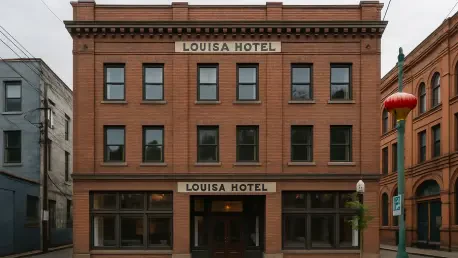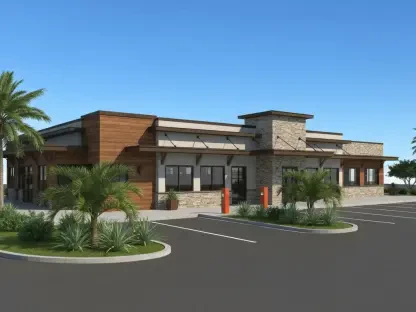In the heart of Seattle’s Chinatown-International District (CID), a 116-year-old landmark known as the Louisa Hotel stands as a silent witness to history, struggle, and resilience at the corner of Seventh Avenue South and South King Street. For over six decades, the Woo family has stewarded this iconic building, a symbol of Asian American heritage, through times of triumph and tragedy, and now, with the possibility of its sale looming large, the community finds itself at a critical juncture, grappling with questions about the future of not just a single property, but an entire neighborhood’s cultural and economic identity. The Louisa is more than a structure; it embodies the dreams and hardships of generations of immigrants who shaped the CID. As economic pressures mount and the district faces transformation, the potential loss of such a cornerstone sparks concern about what lies ahead for this vibrant yet vulnerable area. This exploration delves into the historical weight, current challenges, and hopeful initiatives surrounding the Louisa and the broader CID.
Unpacking a Legacy of Resilience
The Louisa Hotel, originally constructed in 1909 as the Hudson Hotel, has long served as a refuge for Filipino, Chinese, and Japanese immigrants seeking affordable housing in Seattle. Many of these early residents toiled in Alaska’s canneries, finding shelter in the building’s single-room occupancy (SRO) units. Recognized as part of the Seattle Chinatown Historic District on the National Register of Historic Places, the hotel carries profound historical significance. Its basement once housed the Club Royale, a Prohibition-era speakeasy and jazz club, with murals from that time unearthed during renovations following a devastating 2013 fire. These discoveries highlight the building’s role as a cultural touchstone, preserving stories of a bygone era amidst modern challenges. Beyond its physical presence, the Louisa stands as a testament to the endurance of communities that faced systemic barriers while carving out a place in the city’s fabric.
Tragedy, however, has also left its mark on this storied building. The 1983 Wah Mee massacre, a horrific robbery in the hotel’s basement that claimed 13 lives, remains Washington state’s deadliest mass killing. Decades later, a fire on Christmas Eve 2013 destroyed half the structure, displacing tenants and shuttering beloved local businesses. Despite these setbacks, the Woo family, who took ownership in 1963, demonstrated unwavering resolve by rebuilding and reopening in 2019. Their efforts blended affordable and market-rate apartments with commercial spaces, all while safeguarding historical elements. Yet, maintaining such a property in today’s economic landscape poses immense difficulties, raising the question of how to honor a rich past while navigating an uncertain present. The Louisa’s journey reflects the broader struggle of balancing heritage with survival in a rapidly changing urban environment.
Financial Strain and Tough Decisions
The potential sale of the Louisa Hotel stems from deep-rooted financial challenges that the Woo family has faced despite significant investments. Tanya Woo, a co-owner, has highlighted how over $2 million secured through historic preservation tax credits and city funding hasn’t been enough to stabilize the property since its 2019 reopening. Persistent public safety concerns have led to a 20% vacancy rate, as tenants often feel uneasy in the surrounding area. The cost of hiring security, amounting to $200,000 annually, adds a heavy burden to already strained finances. Furthermore, Seattle’s rental inspection ordinances demand costly upgrades to aging SRO infrastructure, with potential expenses that could overwhelm family-owned properties. These economic realities paint a stark picture of the difficulties in sustaining a historic building under modern pressures.
This financial strain isn’t isolated to the Louisa but echoes across the CID, where small businesses and landlords battle similar woes. Break-ins, vandalism, and declining foot traffic, exacerbated by the lingering effects of the pandemic, have taken a toll on the neighborhood’s vitality. With around 600 residents still living in SRO units district-wide, and comparable studio apartments in Seattle renting for over $1,000 monthly, the affordability crisis looms large. For the Woo family, the uncertainty of recouping losses through a sale underscores a broader tension in the CID—rising land values attract developers eyeing profitable projects, often at the expense of community anchors. The economic challenges facing the Louisa mirror a critical turning point for the district, where survival often clashes with the desire to preserve a unique legacy amidst mounting external pressures.
Transformation and the Threat of Displacement
The looming sale of the Louisa Hotel reflects a larger wave of transformation sweeping through the CID, where displacement has become a pressing concern. In recent years, several multigenerational family-owned buildings in the district have been listed for sale, signaling a shift driven by market forces. Iconic corner stores, gift shops, and restaurants along key streets like Jackson and King have closed their doors, while challenges such as drug activity and encampments further erode the area’s appeal. Tanya Woo emphasizes the historical context of these properties, often acquired during times of discriminatory zoning and redlining when the CID was one of the few places Asian Americans could own land. The potential loss of such buildings to developers represents more than a transaction—it’s the erosion of a hard-fought legacy tied to systemic resilience.
Beyond property sales, the cultural fabric of the CID hangs in a delicate balance as land values soar. The push for market-rate developments threatens to displace low-income residents and small businesses that have long defined the neighborhood’s character. The Louisa itself has been a bastion of affordable housing, a commitment the Woo family upholds despite financial hardship. Yet, the broader trend of displacement suggests a future where the district could lose its identity as a cultural and economic hub for Asian American communities in Seattle. This transformation raises critical questions about who gets to shape the CID’s future and whether its historical role as a haven for diverse groups can withstand the pressures of gentrification and urban redevelopment. The stakes are high as the neighborhood navigates this pivotal moment of change.
Revitalization Through Community and Policy
Amid the challenges, a sense of fragile optimism emerges in the CID through concerted community and governmental efforts to revitalize the area. Grassroots organizations have taken bold steps, implementing safety patrols and tenant protection programs to stabilize the neighborhood. The city of Seattle has also contributed with targeted initiatives like rental assistance and grants for storefront improvements, alongside partnerships to enhance security. Tanya Woo advocates for more robust rental aid, particularly for property owners burdened by tenants unable to pay rent for extended periods. At the Louisa, pilot programs placing case managers and social workers on-site to support formerly homeless residents demonstrate a focus on community welfare over mere profit, with efforts to retain vulnerable tenants showing tangible impact.
On a broader scale, policy-level advocacy is gaining momentum to address the CID’s unique needs. Seattle councilmembers have endorsed a comprehensive plan from local leaders to tackle district-specific issues, while Mayor Bruce Harrell’s budget allocations prioritize public safety, cultural events, and economic resilience. Signature events like the CID Night Market and Lunar New Year celebrations continue to draw crowds, offering glimpses of renewal. Looking ahead, major global events hosted in Seattle, such as the FIFA World Cup in 2026, could spotlight the district, though past experiences temper expectations for lasting benefits. The vision for revitalization centers on restoring daily vibrancy—bustling streets and thriving businesses—rather than relying solely on sporadic festivals. These combined efforts signal a determined push to reclaim the CID’s status as a dynamic urban hub.
Safeguarding Culture for Future Generations
Cultural preservation remains a cornerstone of the CID’s fight for its future, with a strong emphasis on engaging younger generations. Tanya Woo envisions a district where youth forge new memories, rediscovering its distinct character and recognizing the urgency of protecting it. The Louisa Hotel’s preserved features—historic doors, trim, and murals—stand as physical links to the past, but their survival hinges on future owners valuing heritage over profit. The risk of losing such elements extends beyond a single building; it threatens the broader narrative of the CID as a living repository of Asian American history. Preservation in this context isn’t merely about maintaining structures but about sustaining a cultural story that resonates with those yet to come.
This mission to safeguard heritage also ties into the identity of the CID as a whole, where each landmark tells a chapter of resilience and community. Encouraging younger residents to connect with the district’s past can inspire a sense of ownership and advocacy, ensuring that the area’s unique spirit endures. The fear of cultural erosion drives efforts to balance modernization with tradition, a challenge that requires innovative approaches to education and engagement. If new ownership or development overlooks these historical ties, the CID risks becoming a hollow version of itself, stripped of the very essence that has defined it for over a century. The push for preservation is a call to action for all stakeholders to prioritize legacy alongside progress.
Navigating an Uncertain Path with Hope
The future of the Louisa Hotel hangs in a delicate balance, mirroring the broader uncertainties facing the CID. Economic pressures, from high vacancy rates to regulatory costs, have pushed the Woo family to consider a sale, despite their deep-rooted commitment to the community. These challenges reflect a district-wide struggle, where the lure of development and rising land values threaten to displace the very people and businesses that give the area its soul. Yet, against this backdrop, community resilience shines through grassroots initiatives and increasing city support, offering a counterweight to the forces of change. Tanya Woo’s cautious hope for daily vitality over fleeting event-driven boosts captures a vision of sustainable renewal.
Reflecting on the path traveled, the Louisa’s story has become a microcosm of the CID’s journey through adversity toward possibility. Years of effort to rebuild after tragedy, coupled with persistent advocacy for affordability, have shown a dedication to community over convenience. As initiatives for safety, cultural engagement, and economic support take root, they lay the groundwork for a stronger future. Moving forward, actionable steps like enhanced transit access, ongoing policy backing, and deeper youth involvement could steer the district back to prominence. The hope lingers that through collective determination, the CID can reclaim its place as a vibrant, world-class neighborhood at Seattle’s heart, preserving its heritage for generations yet to experience its unique charm.









